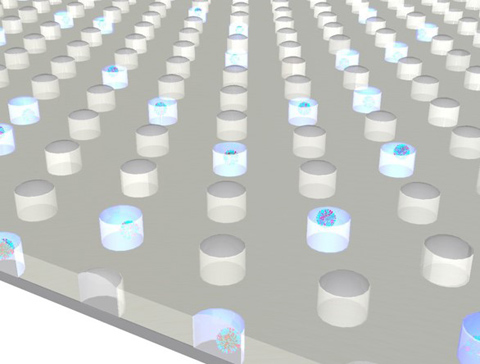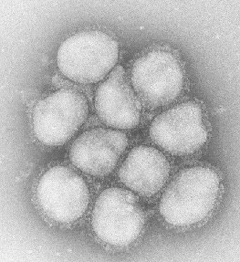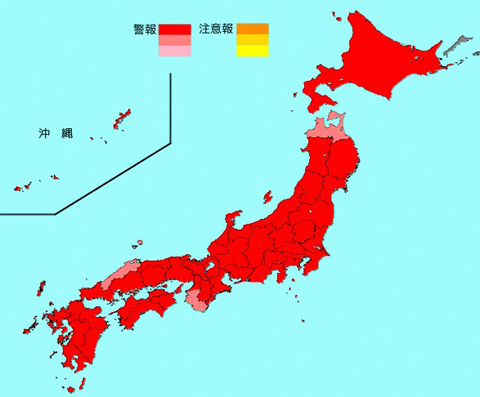News
A New Way to Count Influenza Virus - University of Tokyo Team Develops an Ultrasensitive Detection Method Updated in April 2019
The University of Tokyo team succeeded in developing an ultrasensitive testing method that can single out even one influenza virus. At the most, it is 10,000 times more sensitive compared to the present method. The virus can even be detected from gargled liquid spit out from a possible virus carrier. This will enable accurate testing right after the onset of influenza when the number of virus is still small. Through definitive early diagnosis, this method is expected to prevent widespread pandemics. Results have been published in the Scientific Reports magazine.
The team consisting of Lecturer Kazuhito Tabata, Chief Researcher Yoshihiro Minagawa and Prof. Hiroyuki Noji at the University of Tokyo Graduate School of Engineering succeeded in this endeavor by locking up one virus into a very minimal small space. It is named “Digital Influenza Detection Method.” The present test relies on antigen-antibody reaction called the immunochromatographic method. Besides influenza, this method is widely used to detect norovirus and adenovirus, but cannot judge positivity or negativity unless there is a substantial amount of virus.
Kazuhito Tabata and his team focused on the fact that there is a protruding enzyme shaped like a mushroom on the surface of an influenza virus. When the virus is broken down by this enzyme, the virus starts to become fluorescent. When this fluorescent substrate is “locked up” into a small minute container for observation, the team could judge the existence or non-existence of the virus. To implement this as a new test method, the team developed an array of 600,000 ultra-small containers using a special technology. When a mixture of the virus and the fluorescent substrate was inserted to the array, the team was able to see one virus getting trapped inside the container, in its fluorescent state. By counting the number of minute containers, the team found that they can know the number of viruses or their density.
To find out the accuracy of this Digital Influenza Test, the team used gargled liquid by real influenza patients. As a result, they succeeded in detecting viruses from samples that did not respond to the immunochromatographic test. They also confirmed that the new method would be able to detect viruses 10,000 times more accurately at the most. Now, clinics in Japan use nasal swabs as test samples. The Digital Influenza method can detect viruses from saliva or gargled liquids. This method is less burdensome on patients and can lead to practical implementation.
According to the team, if the new detection method is implemented, infectious disease like influenza can be diagnosed at the onset. By providing appropriate care at the beginning, clinics can prevent deterioration of symptoms or pandemics to spread around Japan. This project was undertaken as part of the ImPACT (Impulsing Paradigm Change through Disruptive Technologies) program led by the Cabinet’s Council for Science, Technology and Innovation (CSTI).
University of Tokyo Press Release
http://www.t.u-tokyo.ac.jp/foee/press/setnws_201902011316388037681078.html
Scientific Reports article
https://www.nature.com/articles/s41598-018-37994-6
Noji Laboratory
http://www.nojilab.t.u-tokyo.ac.jp/member/










